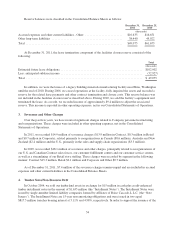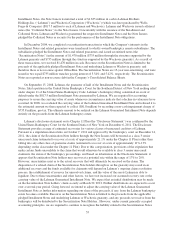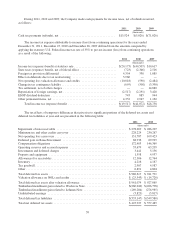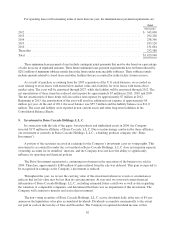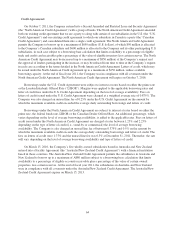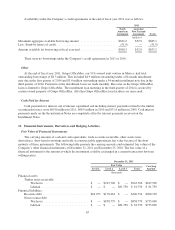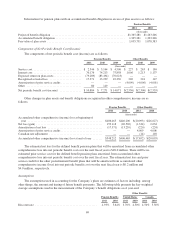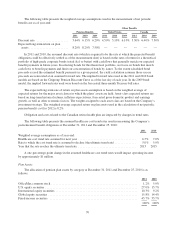OfficeMax 2011 Annual Report Download - page 92
Download and view the complete annual report
Please find page 92 of the 2011 OfficeMax annual report below. You can navigate through the pages in the report by either clicking on the pages listed below, or by using the keyword search tool below to find specific information within the annual report.
Deferred tax assets and liabilities are reported in our Consolidated Balance Sheets as follows:
2011 2010
(thousands)
Current deferred income tax assets ............................................ $ 55,488 $ 92,956
Long-term deferred income tax assets ......................................... 370,439 284,529
Total net deferred tax assets ............................................. $425,927 $377,485
In assessing the value of deferred tax assets, management considers whether it is more likely than not that
some portion or all of the deferred tax assets will not be realized. The ultimate realization of deferred tax assets is
dependent upon the generation of future taxable income during the periods in which those temporary differences
become deductible. Management considers the scheduled reversal of deferred tax liabilities, projected future
taxable income, and tax planning strategies in making the assessment of whether it is more likely than not that
some portion or all of the deferred tax assets will not be realized. Management believes it is more likely than not
that the Company will realize the benefits of these deductible differences, except for certain state net operating
losses and other credit carryforwards as noted below. The amount of the deferred tax assets considered realizable,
however, could be reduced if estimates of future taxable income during the carryforward period are reduced.
During 2011, the Company restructured its domestic entities to better support operations resulting in a reduction
in the tax rate related to certain deferred items which was offset by the impairment of state net operating losses.
The Company has a deferred tax asset related to net operating loss carryforwards for Federal income tax
purposes of approximately $104 million which expire in 2020, and alternative minimum tax credit carryforwards
of approximately $188 million, which are available to reduce future regular Federal income taxes, if any, over an
indefinite period. The Company also has deferred tax assets related to various state net operating losses of
approximately $26 million, net of the valuation allowance, that expire between 2012 and 2029.
As discussed in Note 4, “Timber Notes/Non-Recourse Debt,” at the time of the sale of the timberlands in
2004, we generated a tax gain and recognized the related deferred tax liability. The timber installment notes
structure allowed the Company to defer the resulting tax liability of $543 million until 2020, the maturity date for
the Installment Notes. In 2011, a legal entity restructuring reduced the liability for the installment gain by $14
million to $529 million. Due to the Lehman bankruptcy and note defaults, the recognition of the Lehman portion
of the gain will be triggered when the Lehman Guaranteed Installment Note and the related guaranty are
transferred to and accepted by the Securitization Note holders At that time, we expect to reduce the estimated
cash payment due by utilizing our available alternative minimum tax credits.
The Company has established a valuation allowance related to net operating loss carryforwards and other
credit carryforwards in jurisdictions where the Company has substantially reduced operations because
management believes it is more likely than not that these items will expire before the Company is able to realize
their benefits. The valuation allowance was $25.5 million and $14.7 million at December 31, 2011 and
December 25, 2010, respectively. In 2011, the Company increased the valuation allowances relating to several
state net operating losses. The valuation allowance is reviewed and adjusted based on management’s assessments
of realizable deferred tax assets.
Pre-tax income (loss) related to continuing operations from domestic and foreign sources is as follows:
2011 2010 2009
(thousands)
Domestic ........................................................ $21,202 $ 53,444 $(69,386)
Foreign ......................................................... 36,435 62,292 39,053
Total ........................................................... $57,637 $115,736 $(30,333)
60






